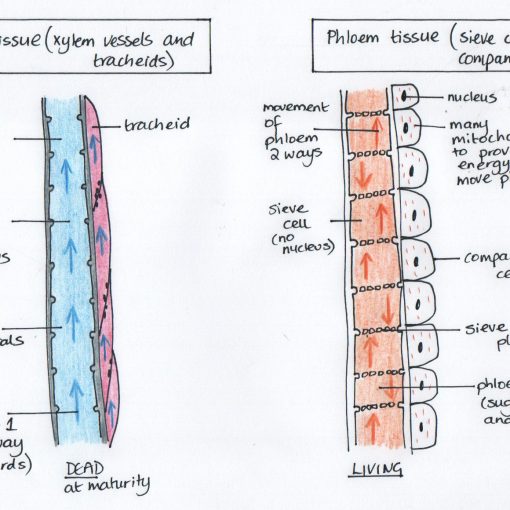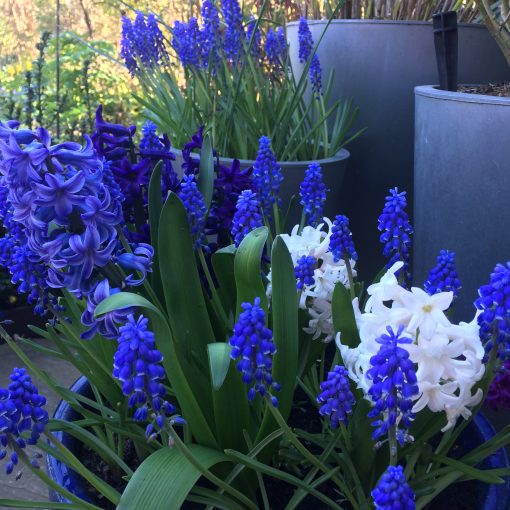The RHS garden planning module (R2111) focuses on hardlandscaping features and the materials they are made from. Let’s take a look at the various materials and how to describe and evaluate them.
R2111 Understanding the effective and appropriate use of hard landscaping materials.
Introduction
This review only focuses on horizontal landscaping features which are steps (and ramps), paths, patio and decking. (As highlighted in the syllabus) Ponds are also included as a horizontal landscape feature. It is important to be aware of the different materials which can be used to construct these various horizontal hard landscaping features along with the pros and cons of these materials.
Landscaping Terms
Hard landscaping = construction (built i.e. non-living) features using materials which are used to improve a designed landscape
Soft landscaping = vegetative (planted i.e. living) features which are used to improve a designed landscape.
Foundation / Subbase = A firm level base which supports a structure such as a patio. The foundation for a patio may be compacted limestone chippings or hardcore or poured concrete.
Concrete = This is a mixture of cement, water and fine and coarse aggregate (gravel and sand) which sets when mixed. It can be poured into moulds to make paving flags/slabs, concrete setts for block paving, statues, poured concrete pathways, and driveways which can be imprinted to look like cobbles. Concrete comes in many different forms so it is very important to be clear which form you are talking about when naming it as a material for a feature. E.g. a path can be made from poured concrete, concrete blocks/bricks or concrete flags.
Mortar = This is a more spreadable mixture which adheres materials to each other such as paving slabs to bed onto a foundation or mortaring between flags and bricks. It is a mixture of fine aggregate (sand) cement (lime) and water.
Building units versus materials
There are different types of ‘units’ used for building structures such as flags, slabs, blocks, sets, bricks, planks, gravel. Paving flags and slabs are the same thing in the UK but ‘flags’ is the favoured term in the North and ‘slabs’ in the South. When giving examples of materials used in the garden make sure you put the material and not just the unit. For example a paving material for a patio could be a natural sandstone paving flag or a concrete paving flag or a porcelain tile. Just giving ‘paving flag’ as an example of a material for a patio is not describing the material in detail and you could lose marks.
Definitions and uses of patio, path, steps/ramp and decking
Patio
A patio is an outdoor area with a solid floor such as paving or concrete used for entertaining, sitting and viewing the garden. It is often sited next to the house but may be in other areas of the garden depending on the site aspect. Shapes are usually geometric – square, rectangular, circular. Planning the position of the patio should consider the aspect and what time of day the client would like to sit in the garden, whether it is exposed or windy, is the area poorly drained and is there access for materials and construction machinery to build it. There may be circumstances outside the boundary of the client’s garden such as a busy road or a kids’ play area in the neighbour’s garden which may mean a quieter space is selected for the patio. Patios have a firm level surface which is usually large enough to accommodate table and chairs. Ideally the surface should not present a trip or slip hazard.

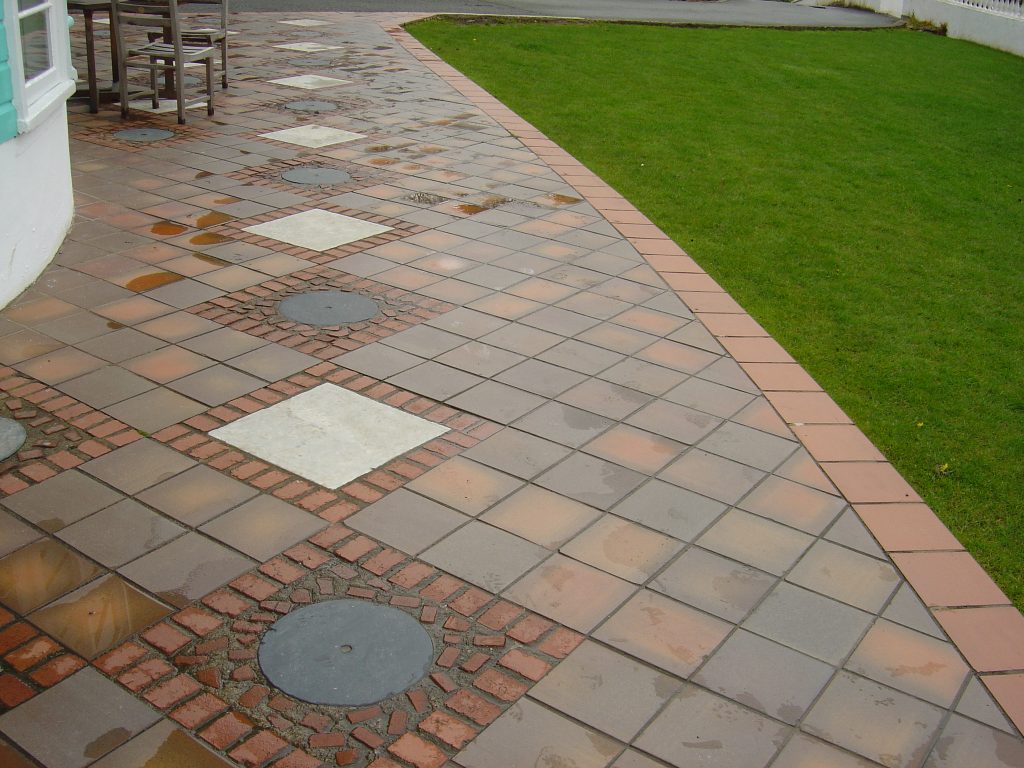

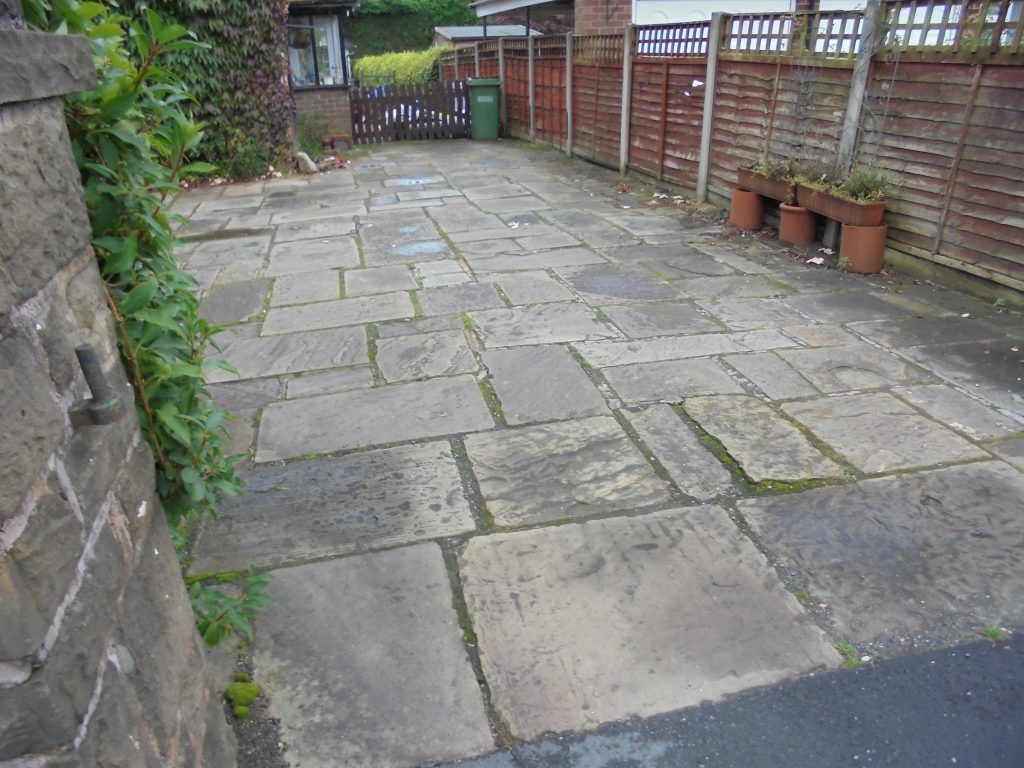
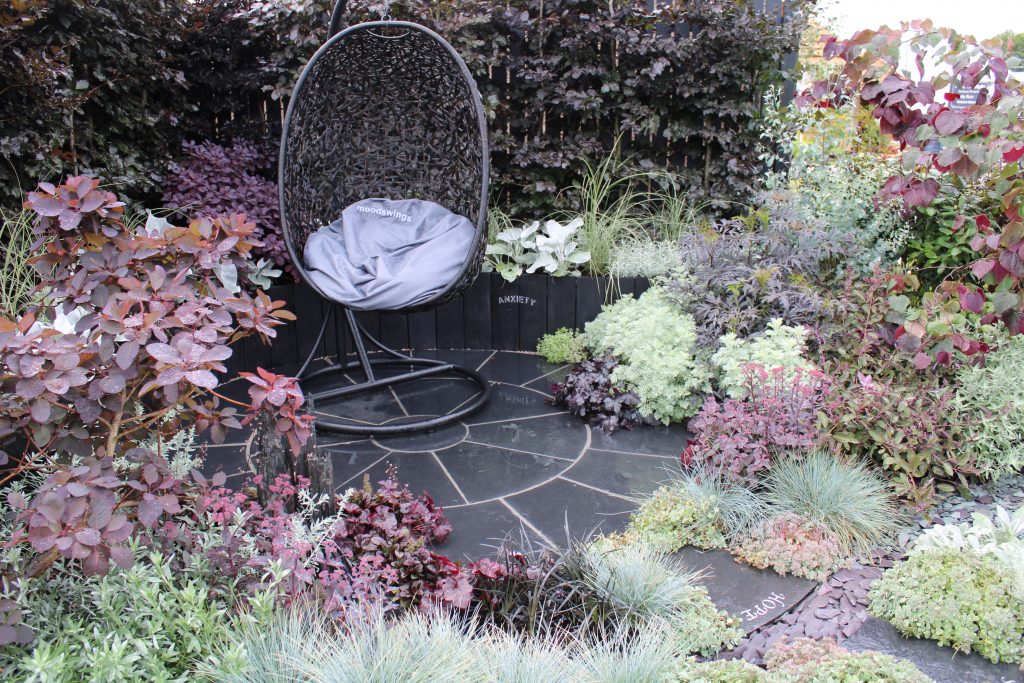
Path
A path links the areas of the garden an allows access. It should follow desire lines (the shortest route from A to B) otherwise people will stray from the path. This is sometimes seen in carparks where people make their own paths between planting, resulting in gaps in hedges and areas where plants have died. Because you are moving on paths, widths may vary depending on how many people are using them and the surface should be none slip. Drainage is important so that the surface is not wet. Paths may be bordered by hedges or planting so it is important to maintain these so that they do not present a tripping or cutting injury (If the hedge was thorny)
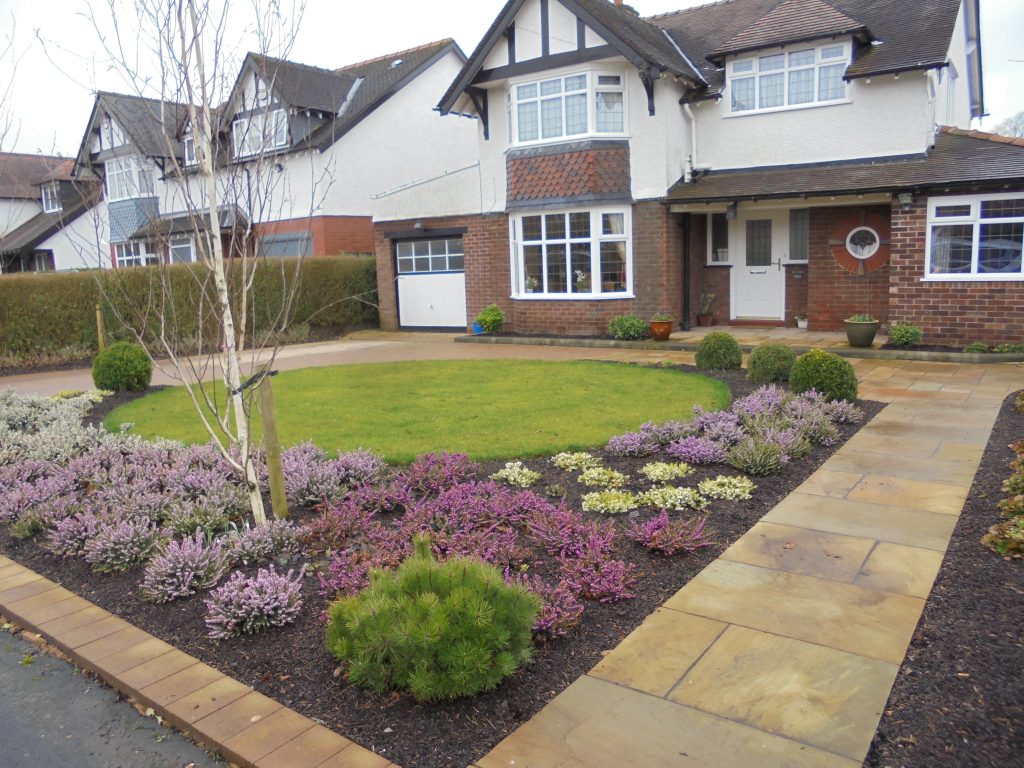
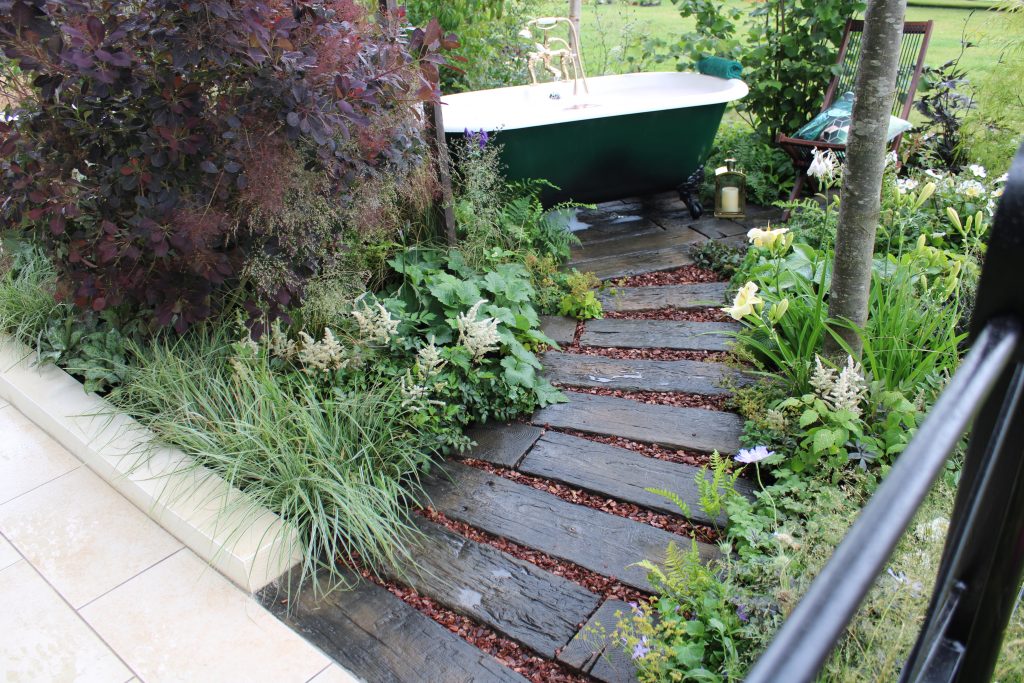
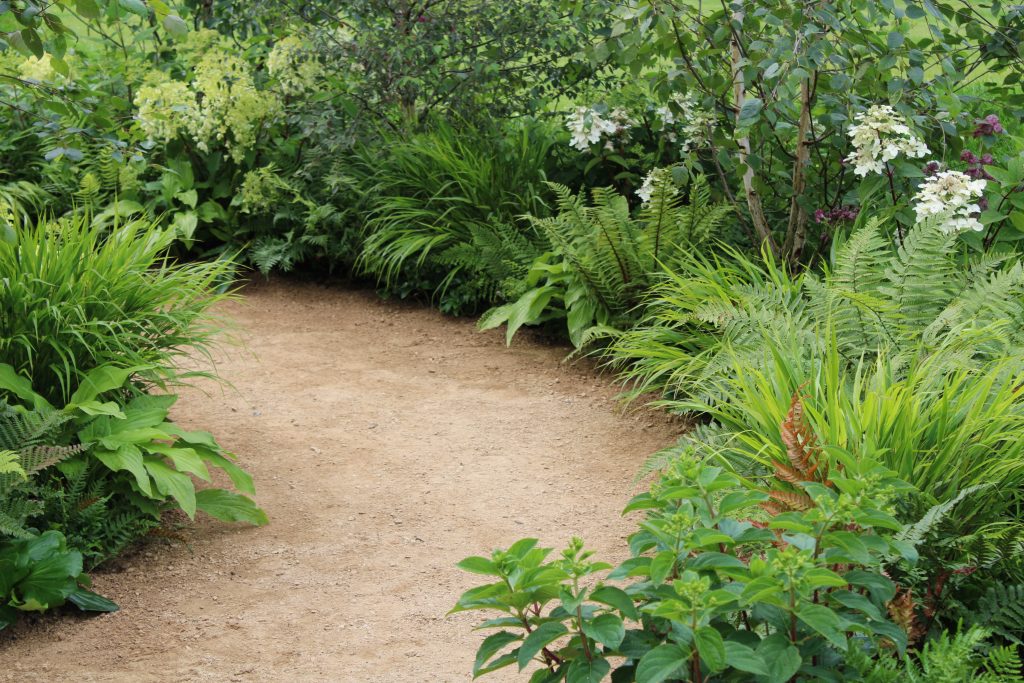
Steps
Some may argue that steps are vertical but they are also horizontal and are considered an extension of a path. So for exam purposes they fit into the horizontal group of features. Like a path they link areas of the garden together while allowing travel up and down levels where there are contours in the garden. Steps are made of treads and risers which vary in measurement but for a flight of steps the risers should be the same, as the brain presumes that the risers are the same and if they are not, they present a tripping hazard. Lighting, handrails, surfaces with grip and considering surface water all make steps safer. Good design may include hand rails, landings where the pedestrian can pause, and a textured surface which is non slip.
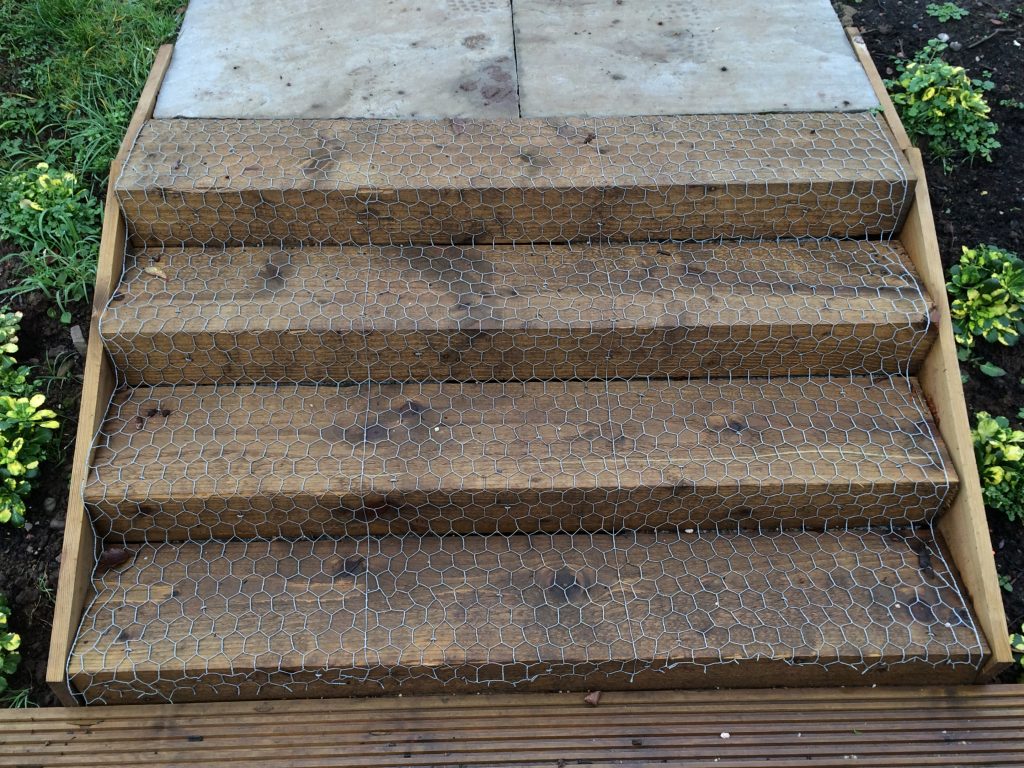
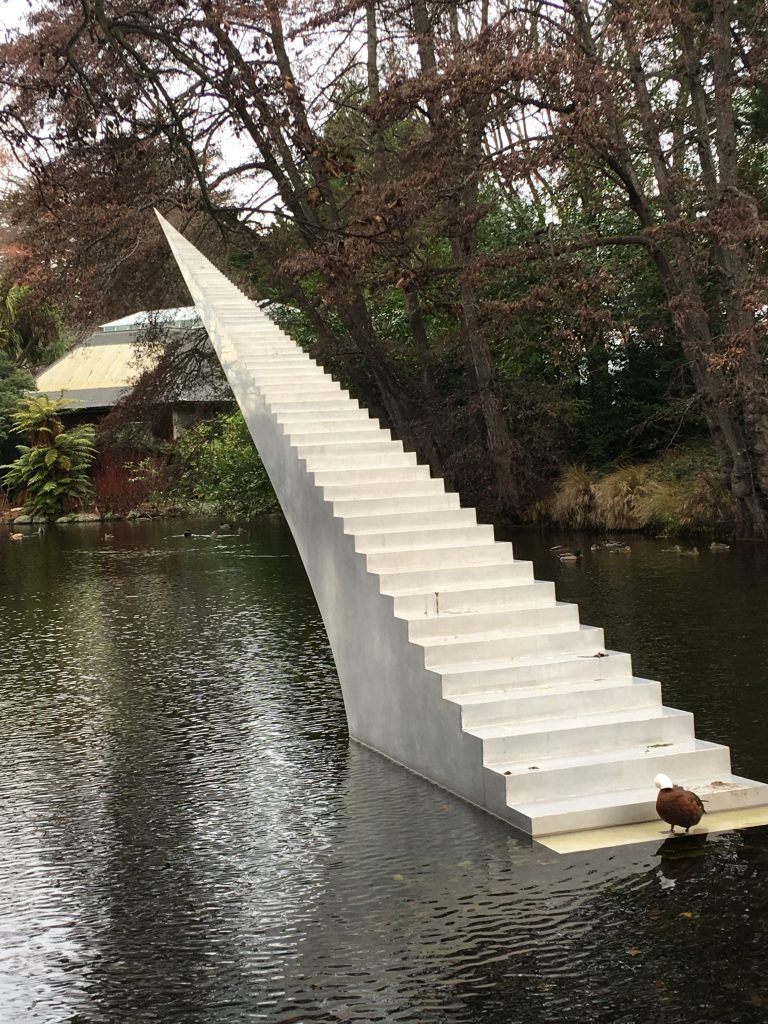
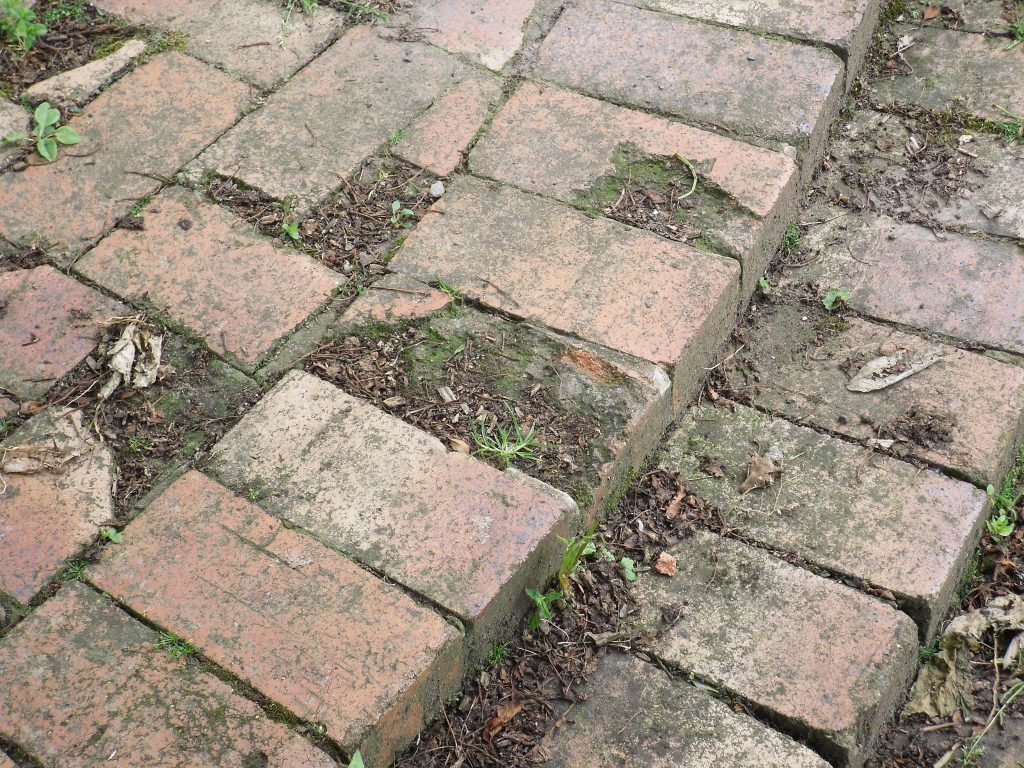
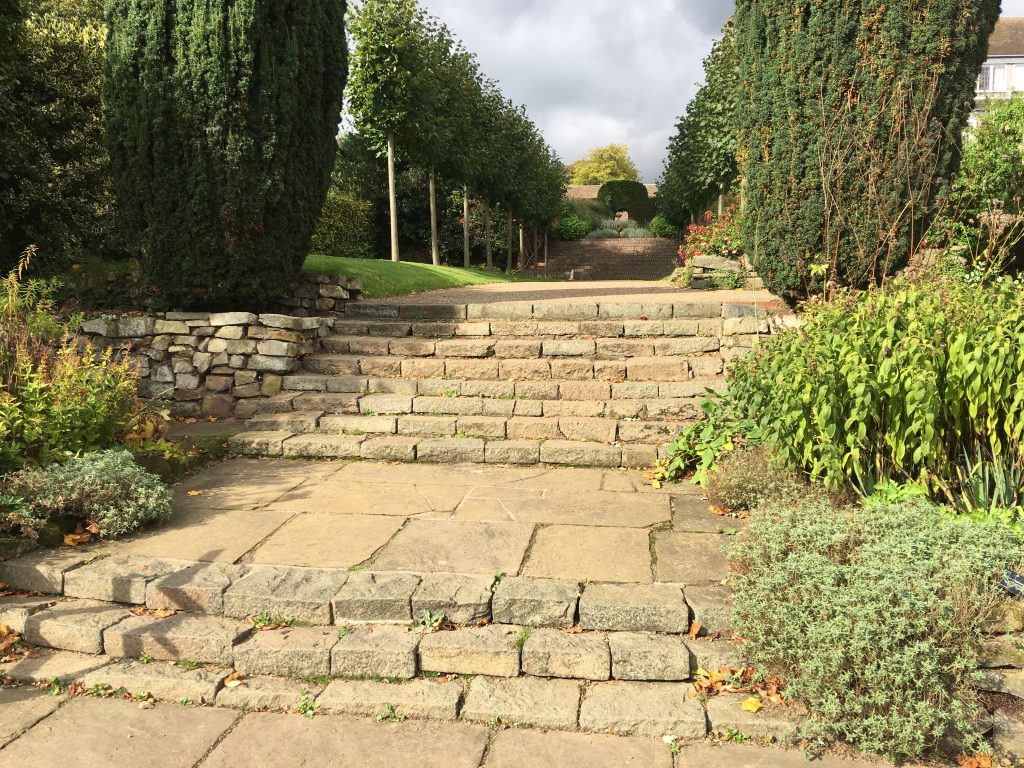
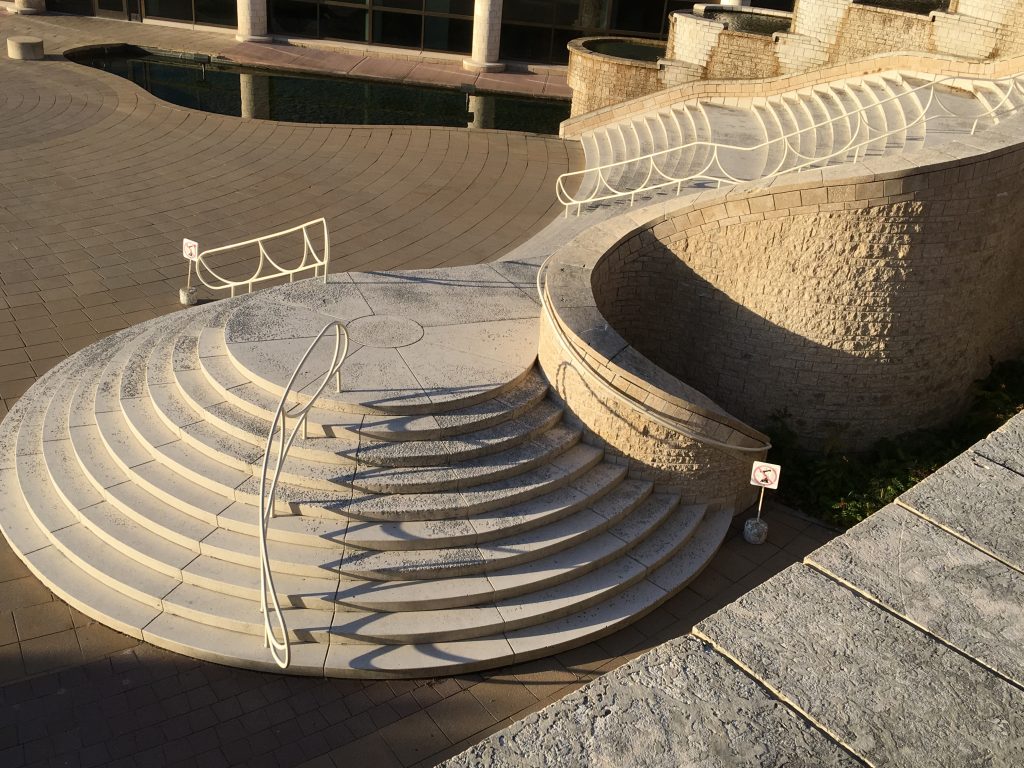
Step design can be very fancy. This looks like a natural quarried stone seen in Canada.
Ramp
A ramp allows access for one level to another and is usually an extension of a path. It is an alternative to steps and allows wheelchair and buggy access or is suitable for those with restricted mobility. The accepted maximum gradient for a ramp is 1 in 12, the surface should have a good grip and there should be a handrail.
This excellent article in ‘Gardens Illustrated’ gives more detail on the design of steps and ramps:
https://www.gardensillustrated.com/garden-design/design-solutions-coping-with-slopes/
Decking
Decking areas are usually elevated and as well as a sitting area they can lookout across the garden to views in the distance. They can be used for entertaining,providing a level space for sitting if the garden has steep gradients or a decking pathway (Boardwalk) may be suspended over a boggy or marshy area of the garden. Decking is made of boards or planks which are laid across a solid framework beneath.
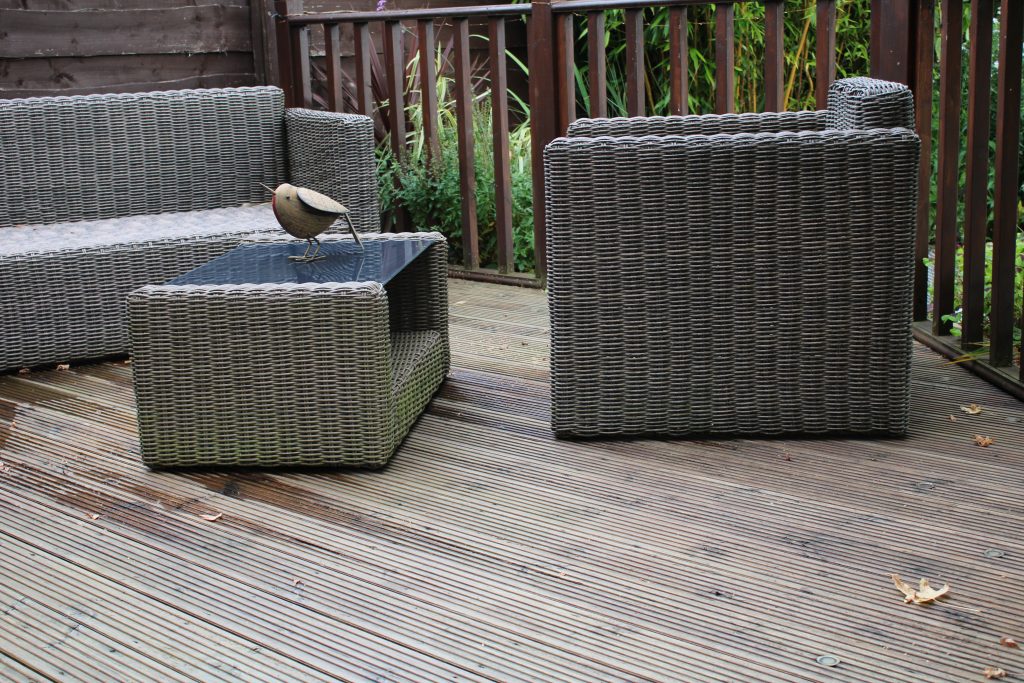

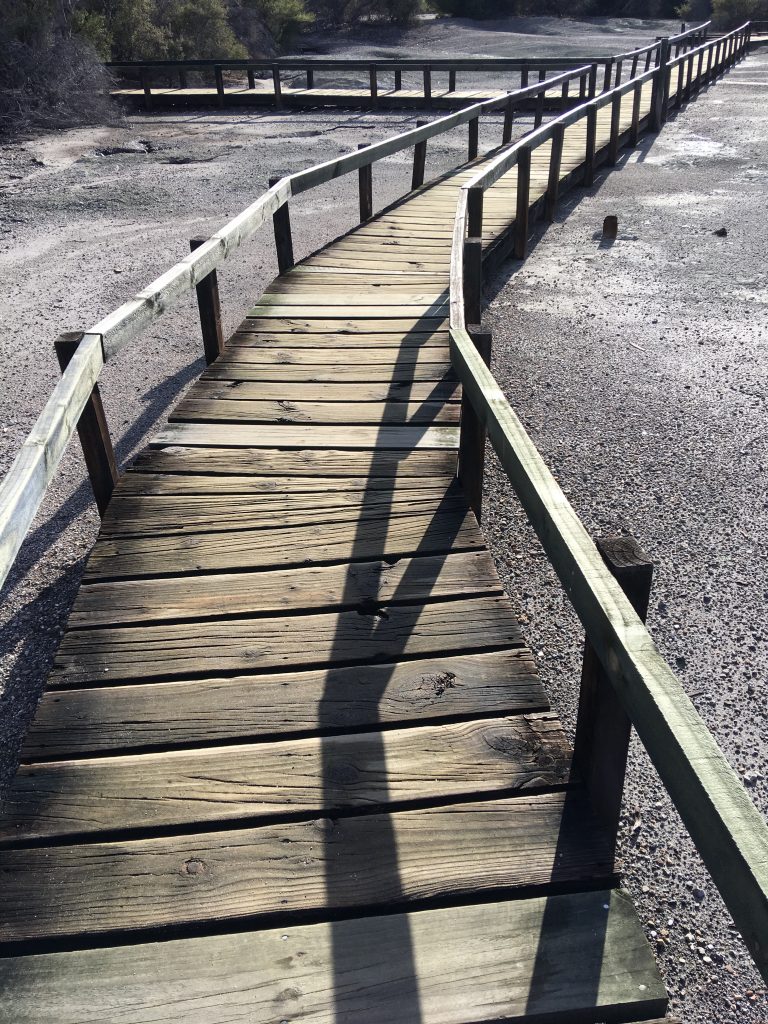

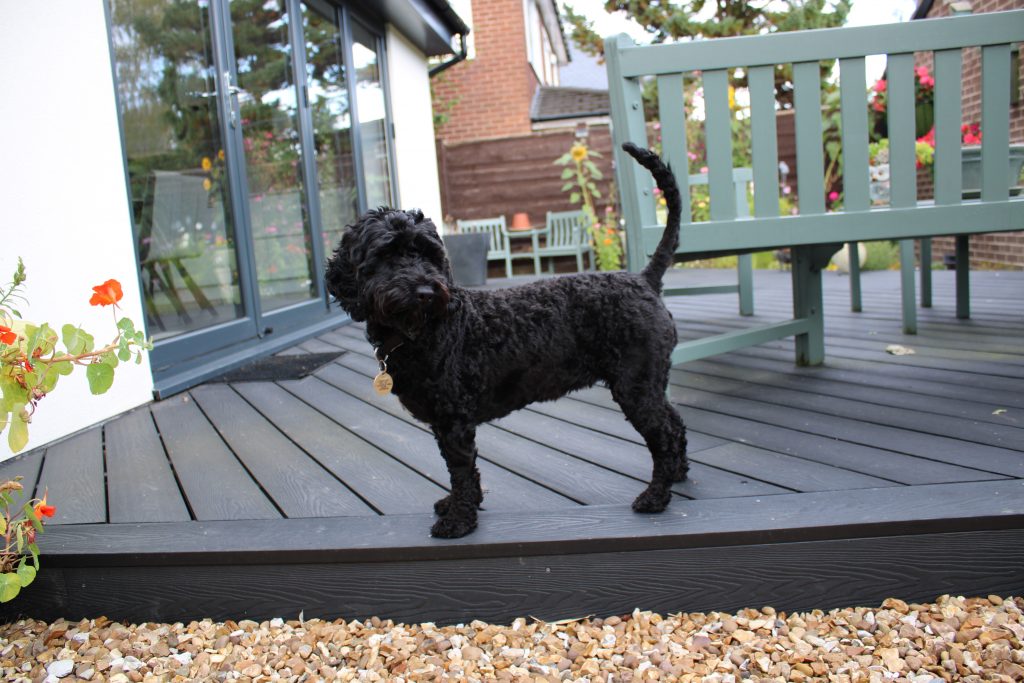
Types of materials for horizontal hard landscaping surfaces
Now that we know what each of the horizontal hard landscaping features are, and how they are used in the garden design, we select our materials for construction.
If we were not studying for the RHS exam and we were choosing materials we would of course consider cost and aesthetics. However there is no point considering these for exam purposes as beauty is in the eye of the beholder and although you may think concrete flags are always cheaper than natural stone flags, this is not always the case. It is impossible to judge materials for cost and aesthetics so do not include these criteria when analysing the pros and cons of different materials.
Selection of materials. When selecting materials for your horizontal feature think about:
- Durability
Does it rot, will it have to be treated regularly to stop it rotting, will it last for a long time with no maintenance. Hardwood such as oak or teak is more durable than softwood such as pine. - Maintenance
Will it require regular cleaning / treating with preservatives. - Ease of construction
- Sustainability
Using local natural stone means the carbon footprint is less when transporting the materials to site compared to importing Indian sandstone. Some materials take a lot of energy to make such as concrete. If you use timber products it is better if they are FSC approved (Forestry Stewardship Council) which means that forests are managed in a sustainable way. Recycled materials are more sustainable. - Garden Style
Selection of materials will also have to match the garden style so that the design is cohesive. A porcelain tiled patio would look odd in the middle of a woodland setting whereas softwood timber decking would fit well. Materials should also match the local environment – for example using the local natural stone as paving to match the local stone used for the house and garden walls. - Colour
Some materials come in a range of colours and some materials can be painted or stained to match the colour of window frames or doors of the house for example. - Porosity of the material
Does the material allow surface water to infiltrate through the ground? Materials which have good SuDS credentials (sustainable drainage system) lower the risk of surface flooding.
The tables below compare and contrast the merits of using different materials for various horizontal hard landscaping surfaces:
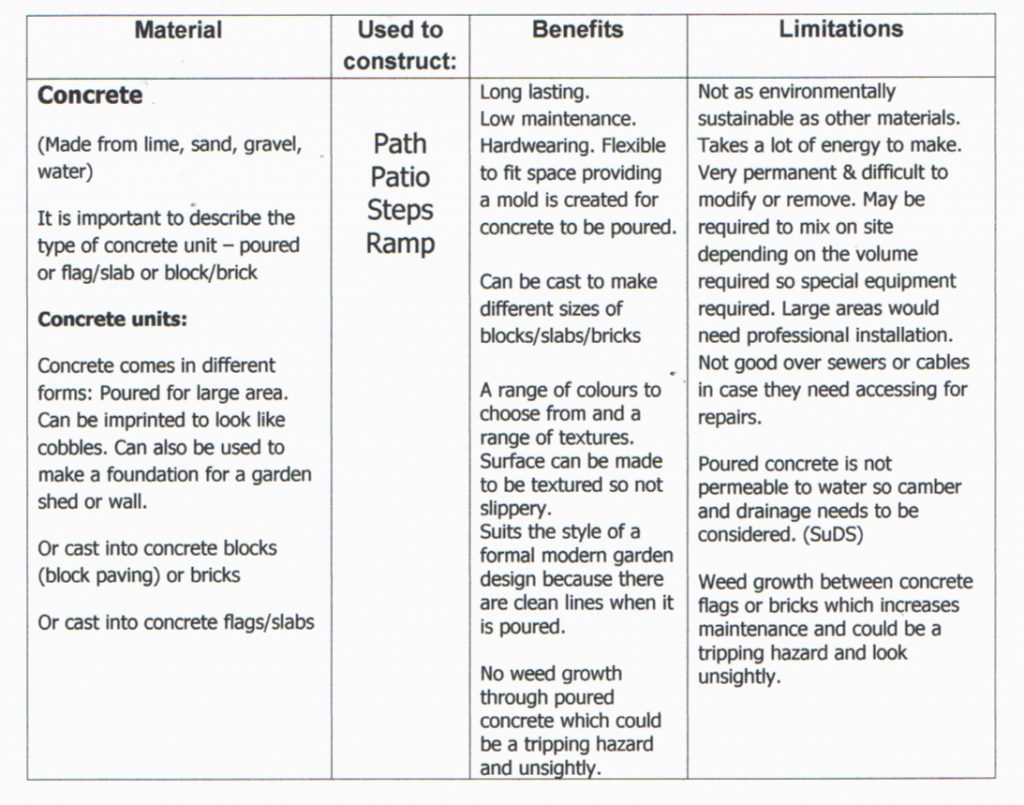

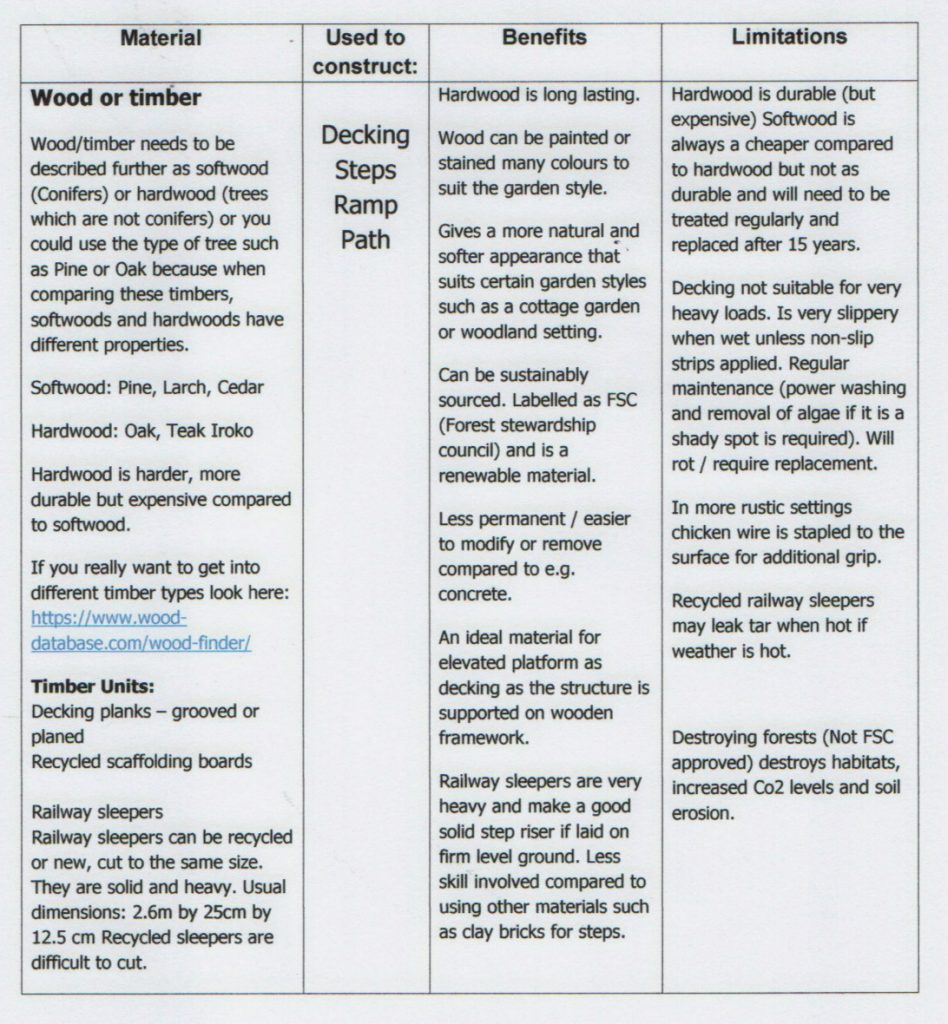
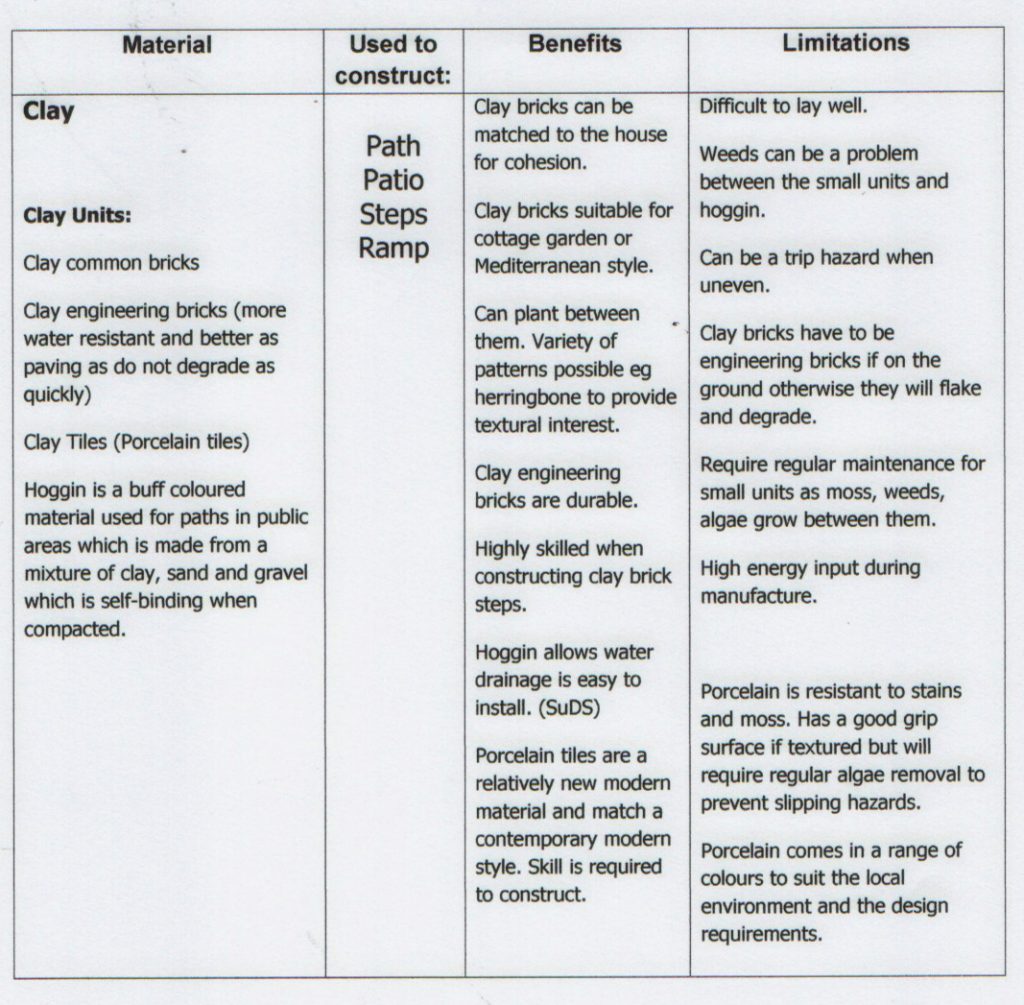
This website explains the different types of clay bricks. Clay bricks which are not engineering bricks can be called facing bricks, London bricks, commons and have many other names. https://www.wienerberger.co.uk/tips-and-advice/brickwork/how-can-i-identify-different-types-of-bricks.html
Conclusion
The key takeaway from this blog is that you need to be very clear when naming the material because it is therefore obvious what the pros and cons of that material are in relation to the hard landscaping structure. If you just wrote ‘concrete’ or ‘brick’ it does not describe the material well enough to clearly explain its merits.
Examples of good descriptions are:
- Poured concrete for a patio.
- Concrete bricks for steps.
- York stone (or sandstone) paving flags for a patio or steps.
- Cotswold stone (or limestone) paving flags for a patio or steps.
- Cotswold stone bricks for steps.
- Pine decking planks for decking.
- Hardwood timber decking planks for decking boardwalk.
- Engineering clay bricks for a path.
- Porcelain tiles for a patio.




